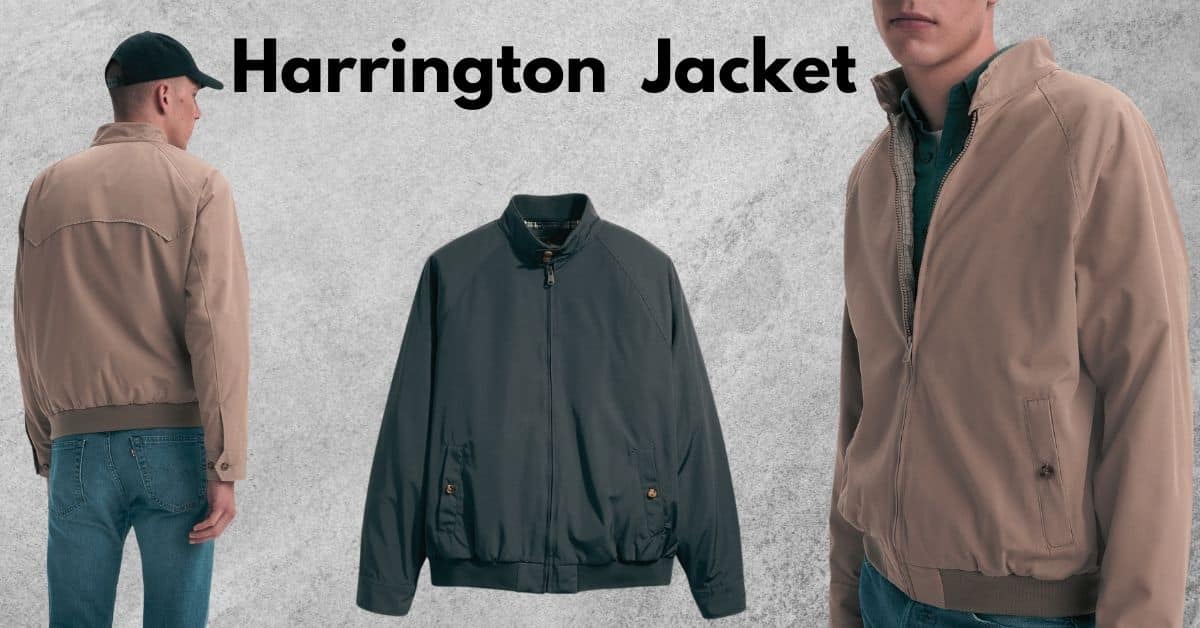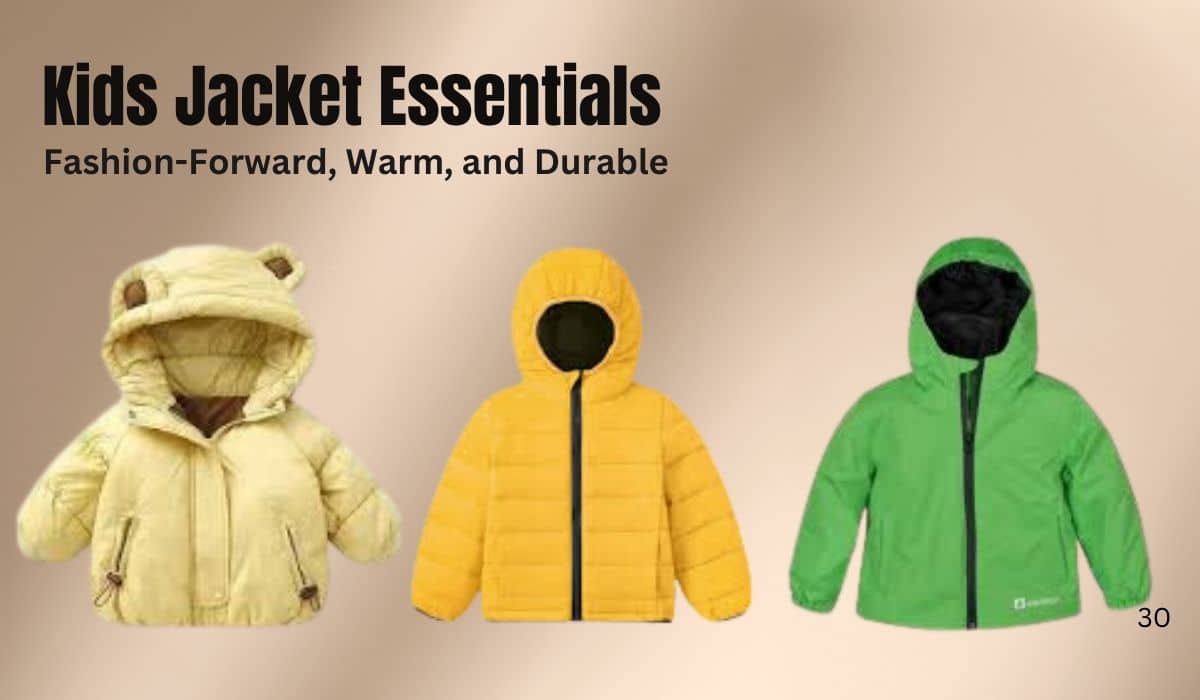Woolen fabric is renowned for its heat, softness, and toughness. It naturally regulates its temperature, which means it’s fine in both cold and warm climates. Additionally, its sustainability as a biodegradable and renewable substance adds to its appeal to environmentally conscious customers.
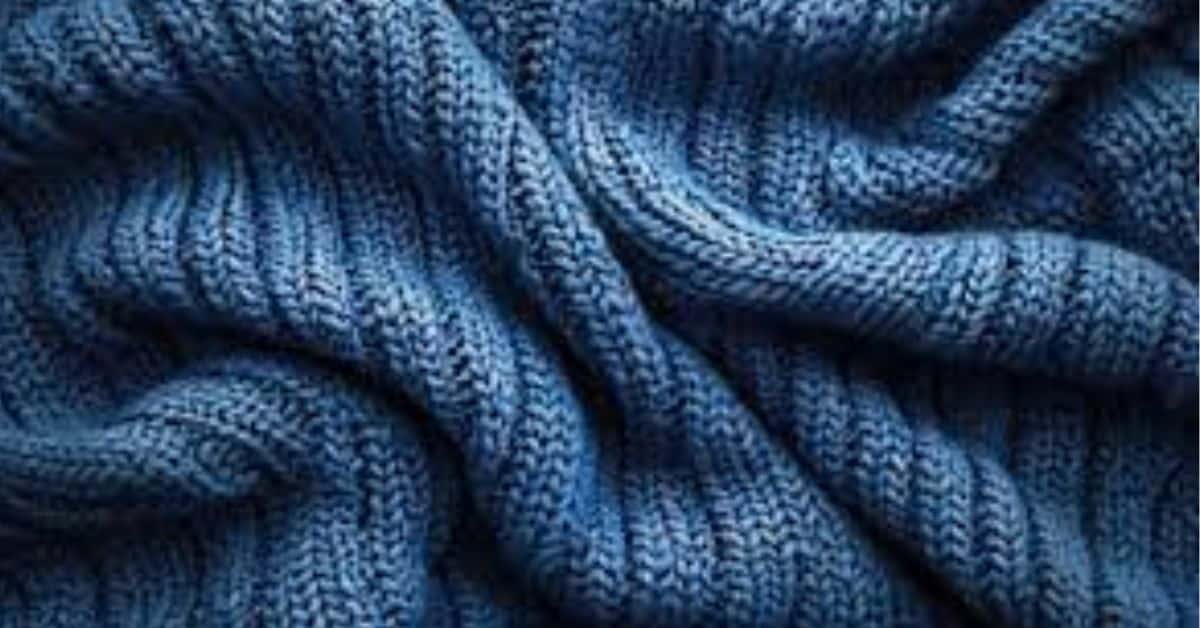
What is Woolen Fabric?
Manufacturers create woolen fabric using natural wool fibers, primarily from sheep. They spin short wool fibers loosely to produce a soft, fuzzy cloth that feels warm and cushy. Unlike the tightly spun worsted wool with its smooth texture, they craft woolen fabric to be softer and coarser, making it an excellent insulator. This light, cozy material serves a variety of purposes, including clothing, bedding, and more.
Properties of Woolen Fabric
Woolen fabrics possess a peculiar combination of attributes that render them highly versatile and in demand in several fields. Its natural fibres and its feel and form offer many advantages. Listed below are the major functions of wool fabric:
1. Warmth and Insulation
Woolen clothes are incredibly warm, because of their loosely spun yarns. These fibers catch air, which naturally wicks away body heat and serves as insulators. This property makes it ideal for winter gear and cold weather clothing.
2. Soft and Comfortable Texture
Its fabric is slightly fuzzy and airy and feels smooth on the skin. That is one of the reasons it’s ubiquitous in blankets, scarves, and other cuddly goods
3. Elasticity and Durability
Wool fibers are naturally elastic, so the fabric keeps its shape when stretched. This durability makes woolen textiles resistant to stains and tearing, even with repeated use.
4. Moisture Absorption and Wicking
Wool cloths can retain as much as 30% of its weight in moisture without being damp. It keeps the wearer hydrated and comfortable by wicking moisture away from the skin. Especially useful in activewear and outdoor wear.
5. Odor Resistance
Wool naturally resists bacteria, helping to repel odors. This quality allows woolen clothing to stay fresh longer without needing frequent washing.
6. Breathability
Wool blocks wind while still being warm. Its fibers let air flow through, stopping overheating and keeping you comfortable in any weather.
7. Fire Resistance
Woolen fabric is naturally flame-retardant. It is inflammable and dies when the ignition source is turned off. It is therefore safer for furniture and clothing at home.
8. Eco-Friendly and Sustainable
Wool is a renewable, biodegradable resource. Woolen fabric also breaks down in nature without harming the environment, thus ensuring that customers have a sustainable product.
9. Wrinkle Resistance
The inherent stretch of wool fibers keeps woolen fabrics from wrinkling. This makes it ideal for clothing and household textiles that require tidyness.
10. Dye Affinity
Woolen fabrics are naturally dye-sensitive, and they create bright and durable colours. It therefore becomes a popular fabric for prints and upholstery.
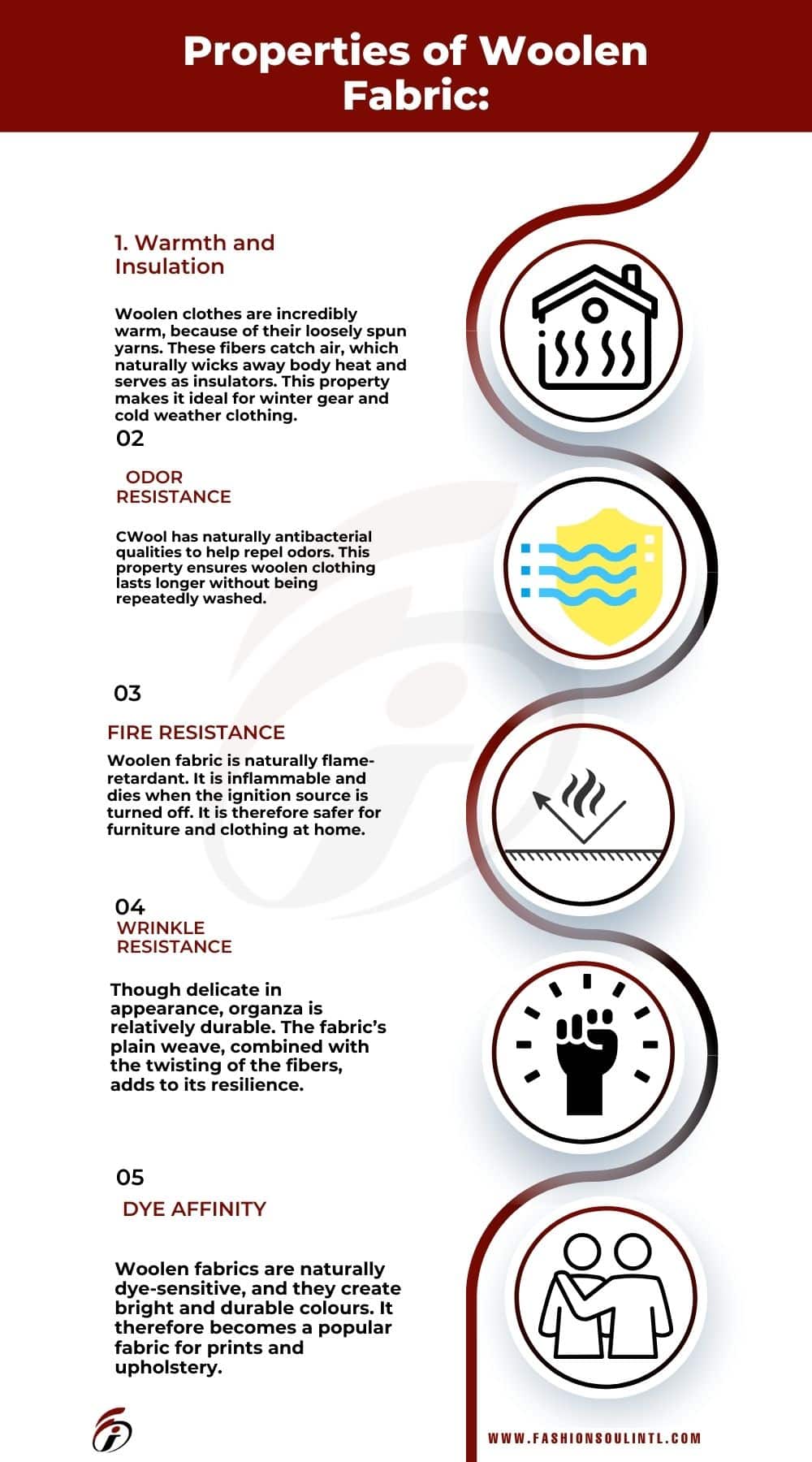
How is Woolen Fabric Manufactured?
Woolen fabric production begins by transforming raw wool into a soft, cozy, and textured material. Skilled artisans and specialized equipment work together to achieve high-quality results. They wash and clean the wool to remove impurities, then card it to align the fibers. Spinning machinery twists the fibers into yarn, which is woven or knitted into fabric. After weaving, experts treat the cloth through fulling and finishing processes to enhance its texture and durability. This meticulous approach ensures the woolen fabric achieves its renowned warmth and comfort.
1. Shearing the Wool
It begins with shearing, the process of removing wool from sheep. This happens once or twice a year, depending on the breed. The wool is removed carefully, leaving it intact and unbroken.
2. Sorting and Grading
Workers collect sheared wool, or fleece, and separate it based on quality, length, and fineness. They reserve top-quality wool for clothing, while they use coarser wool for making rugs or industrial products.
3. Cleaning and Scouring
The virgin wool also has dirt, grease and lanolin in it. It is scuffed in an operation known as scouring, in which wool is washed in a series of hot water baths with detergent. This cleanses out impurities, and produces raw wool fibers.
4. Carding
Upon cleaning, the wool is carded, which untangles and rebalances the fibres. Carding machines break clumps with fine-toothed combs and pile up the fibres into a soft, fluffy net. This process also produces the finer fibres found in woollen clothing.
5. Spinning
Carded wool is loosely spun into yarn. Woolen yarn, unlike worsted wool, is spun at very low tension so that the fibres remain airy and supple. It’s this free-spin that gives woollen clothing its warmth and softness.
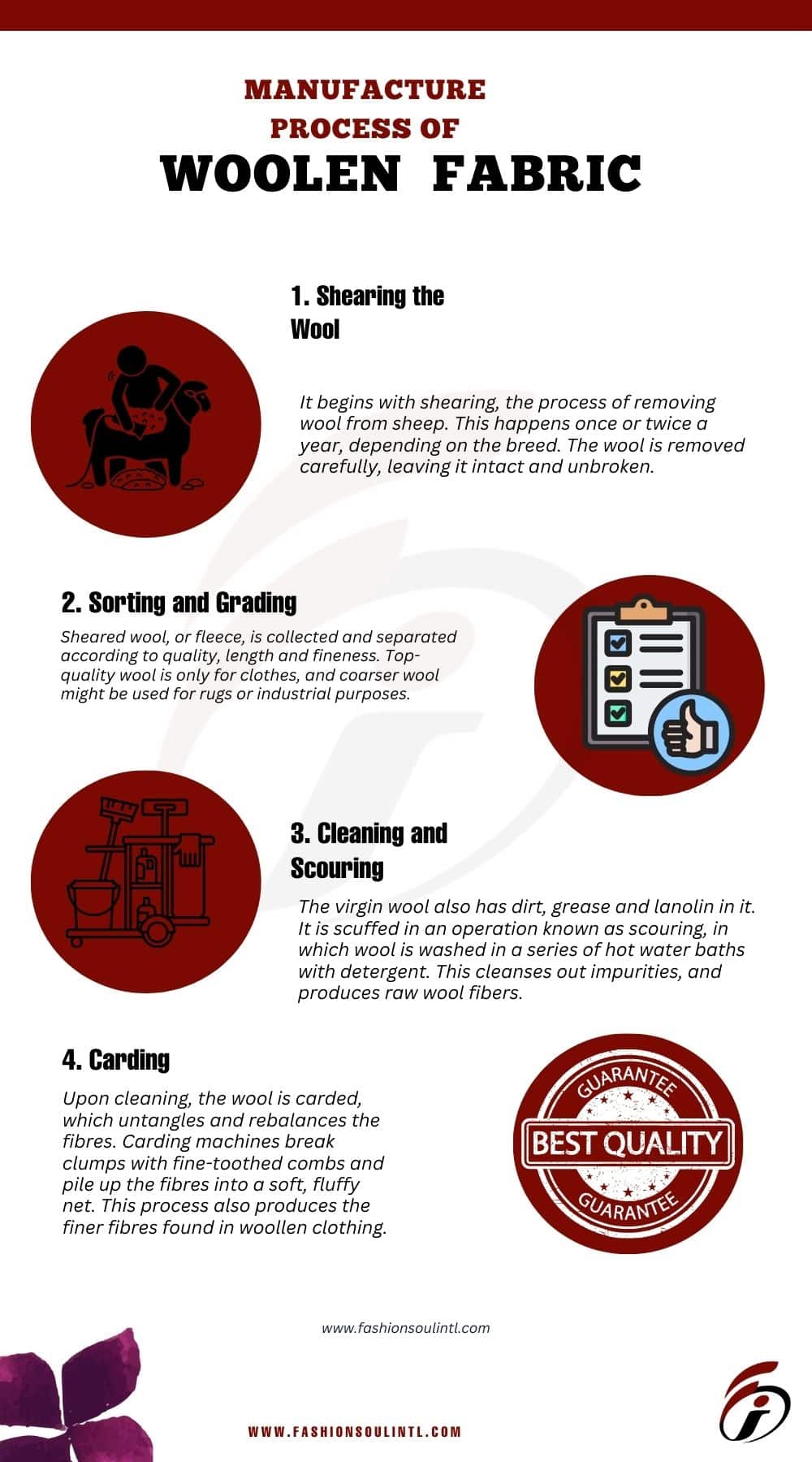
Uses of Woolen Fabric
Wool fabric is an extremely versatile material, with uses from clothing, home furnishings, and industrial products. Because of its various qualities, such as being warm, supple, and strong, it is widely utilized across industries. These are the principal applications of woollen cloth:
1. Clothing and Apparel
Wool is widely used in clothes for warmth and comfort.
- Winter Wear: Sweaters, coats, scarves, and hats made of wool keep you warm in winter.
- Casual Wear: Wool trousers, skirts, and jackets offer style and warmth.
- Socks and Undergarments: Wool is great for thermal socks and underwear as it wicks moisture and insulates.
2. Home Textiles
The comfort and insulation properties of woollen textiles make it suitable for many home furnishings:
Blankets & Throws: Woolen blankets are cozy, cozy, and good for chilly nights.
Cushions & Pillows: Wool covers give rooms a warm and cozy touch.
Clothes: Woolen drapes are good to keep the cold air out and make it look luxurious.
3. Upholstery and Décor
Woolen cloth adds style and flexibility to homes.
- Furniture Fabric: Chairs, sofas, and ottomans use wool for a classy look.
- Wall Coverings: Wool panels decorate walls, adding texture and warmth to rooms.
4. Industrial Uses
Wool fabric also has specialized industrial uses. For sound insulation, it blocks noise effectively, making it suitable for acoustic panels. Additionally, it resists fire, so it works well for flame-retardant blankets and safety gear.
5. Accessories
Woolen fabric, with its soft warmth, is a favourite fabric for many accessories:
Hats and Gloves: These are winter necessities, and make your winter look good and comfortable.
Bags and Pouches: Woolen bags and organizers are sturdy and rugged in design.

Types of Woolen Fabric
There are several types of woollen fabrics, each with its own features, tailored for specific uses. They are differentiated by fiber origin, weave, texture, and use. Here’s a quick guide to the most used woolen fabrics:
1. Tweed woolen fabric
Tweed uses coarse, textured wool and often features herringbone, plaid, or checks. It is durable, water-resistant, and warm. People commonly wear it in jackets, coats, suits, and hats, especially for outdoor and traditional clothing.
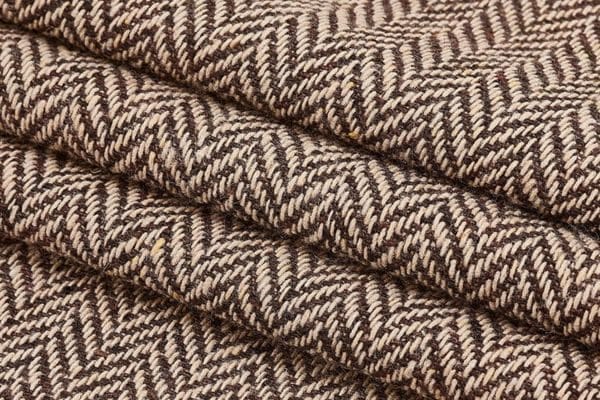
2. Flannele woolen fabric
Manufacturers use thin, soft wool to make flannel and brush it on one or both sides to create a fuzzy feel. This fabric provides warmth, breathability, and a cooling effect on the skin. People commonly choose it for shirts, pajamas, blankets, and trousers.
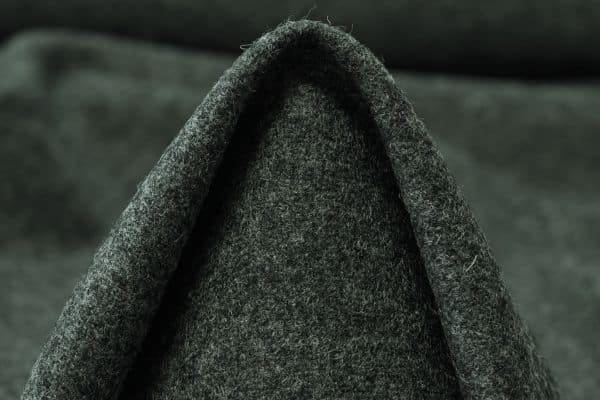
3. Felt woolen fabric
Manufacturers create felt by matting and stitching wool fibers together to form a nonwoven fabric. This material is dense, durable, and water-resistant, making it ideal for various applications. People use felt for hats, crafts, accessories, industrial insulation, and sound absorption.
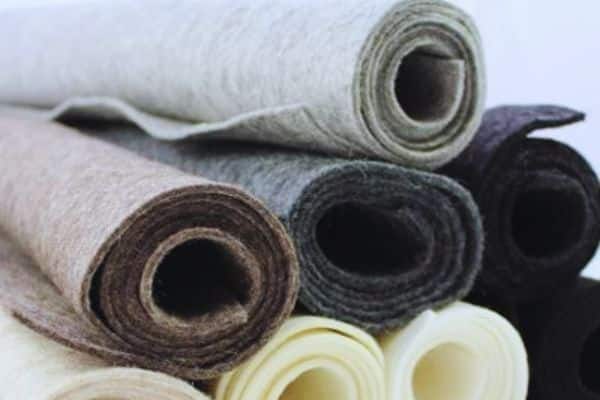
4. Bouclé woolen fabric
Manufacturers craft bouclé using rolled or curly yarn, giving it an irregular and uneven texture. This fabric is soft, lightweight, and textured, making it a popular choice for upholstery, jackets, and decor.
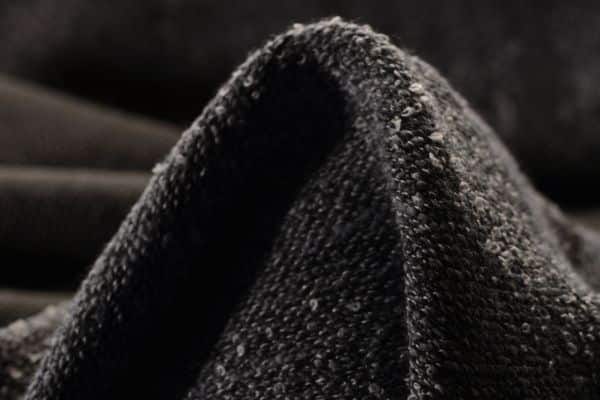
5. Melton Wool
Melton wool is a dense, smooth-woven cloth. It is finished by fulling – a finishing process that keeps it dense and wind-resistant.
Characteristics: Heavy, durable, and warm.
Application: Good for coats, capes and military wear.
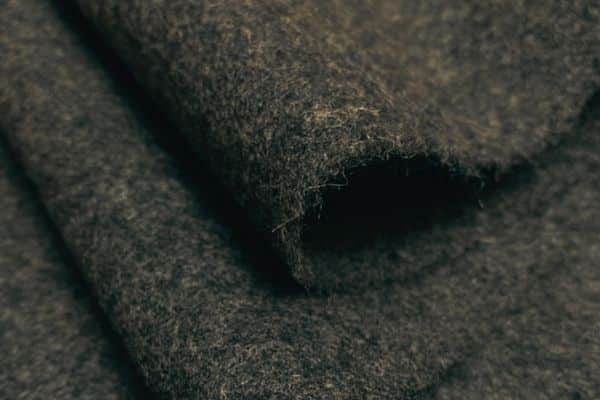
6. Wool Crepe fabric
Wool crepe is a thin fabric that’s slightly wrinkled or textured due to the twisting of its fibres.
Characteristics: Wrinkle-resistant, lightweight, and flexible.
Application: Commonly used in dresses, skirts, and suits.
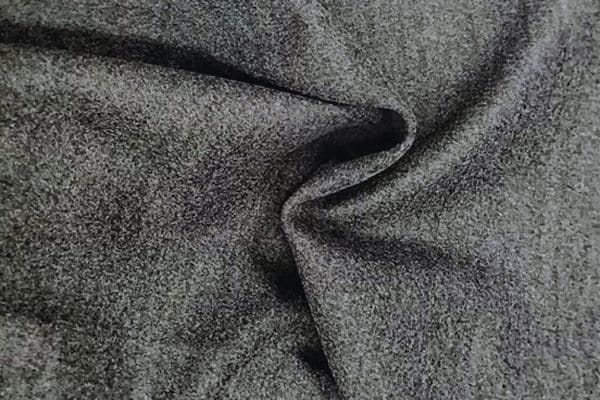
7. Gabardine
Gabardine is a very fine woollen fabric, woven with a particular twill pattern.
Characteristics: Smooth, durable, and weather-resistant.
Application: Used in suits, trousers, raincoats, and uniforms.
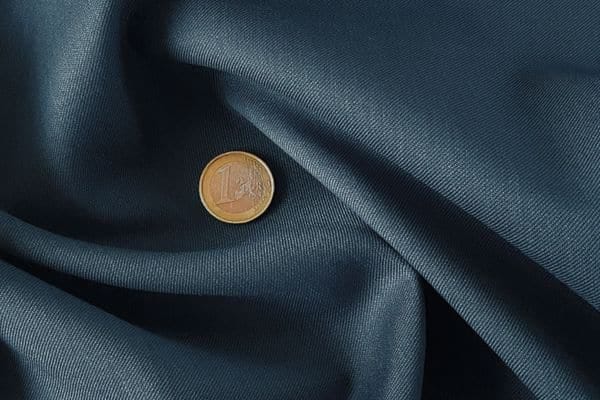
8. Worsted Woolen fabric
Though not actually a wool fabric (it uses longer, combed fibers), worsted wool is smooth and softly woven.
Characteristics: Smooth, durable and less fuzzy than woolens.
Applications: Clothes, pants, dress code.
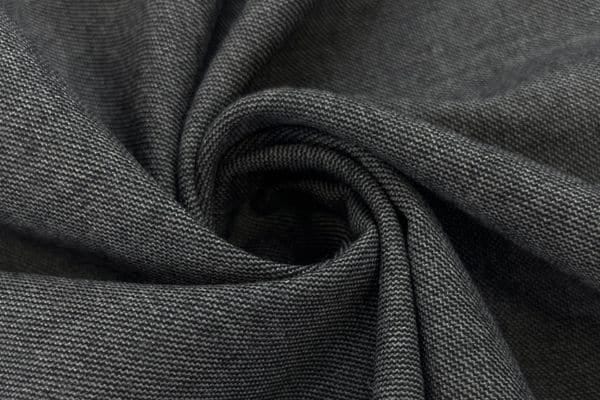
9. Cashmere woolen fabric
Cashmere wool comes from the fleece of cashmere goats, making it ultra-soft. It feels thin, silky, and incredibly warm. Designers use it for stylish garments like jumpers, scarves, and jackets.

10. Merino Woolen fabric
Merino wool comes from the fleece of Merino sheep, giving it exceptional softness. It is lightweight, wicks moisture effectively, and allows breathability.
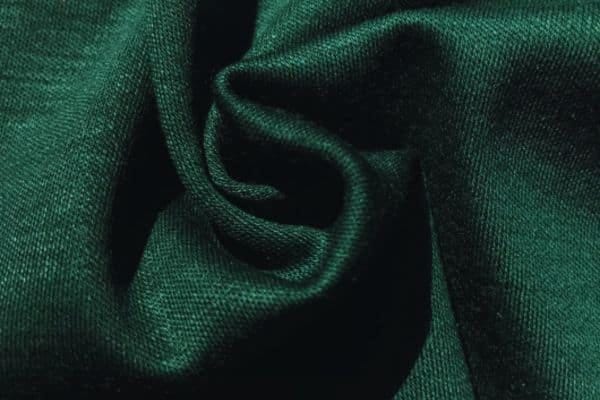
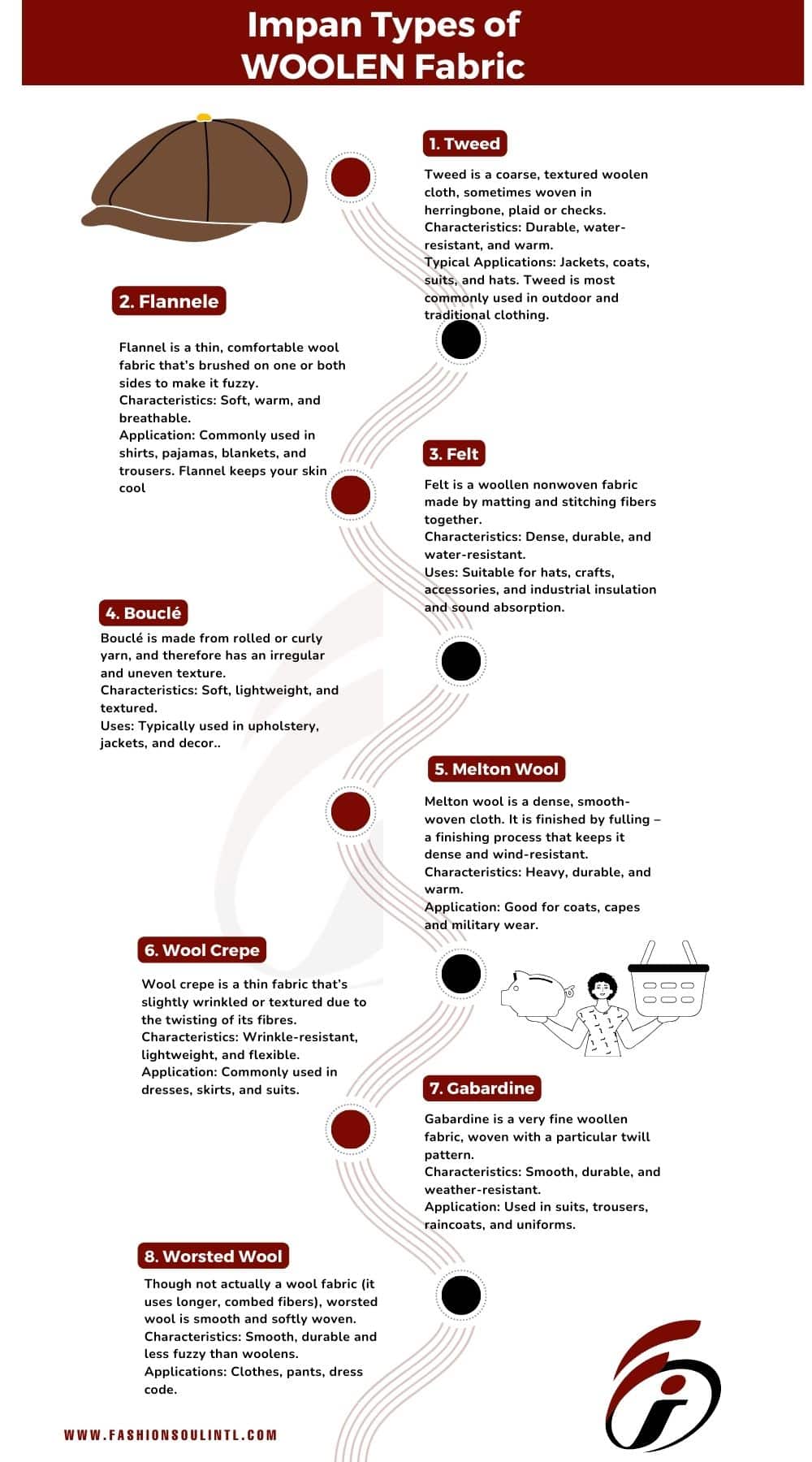
Caring for Woolen Fabric
For keeping woollen textiles fresh:
1)Do not wash with harsh detergent.
2)Blot dry flat, so that you won’t stretch.
3)Keep cool, dry, and moist with moth repellents.
FAQS:
What is the difference between woolen and worsted fabric?
Woolen fabrics have short fibers and are fuzzy, whereas worsted fabrics have longer fibres and are silkier.
Can woolen fabric be machine-washed?
A large majority of woolen clothes are hand-washable or dry-cleanable, but can be machine washed if indicated so.
Is woolen fabric sustainable?
In fact, wool is both renewable and biodegradable, which makes it environmentally friendly.
Conclusion
Woolen fabric stays timeless, loved for its warmth, softness, and versatility. Its lasting appeal in fashion, furniture, and industry comes from blending tradition with innovation. When we learn what it’s made of, why it’s used, and how it’s crafted, we appreciate the skill behind this unique textile.

